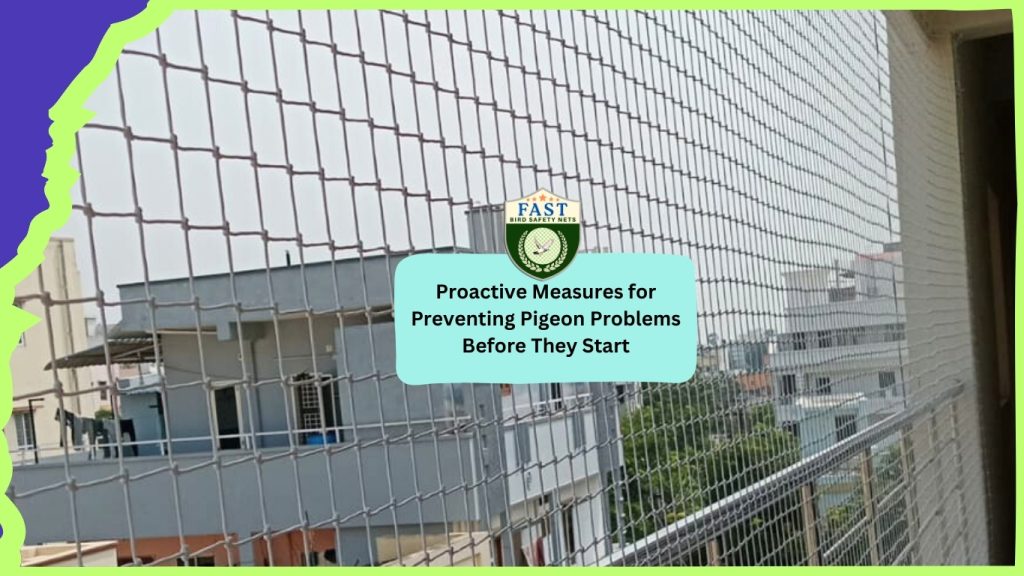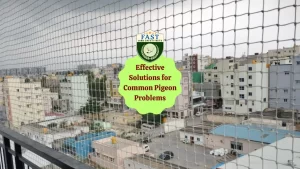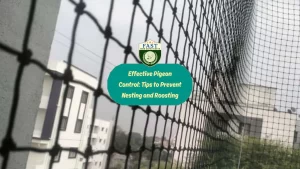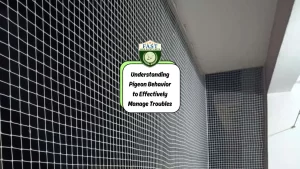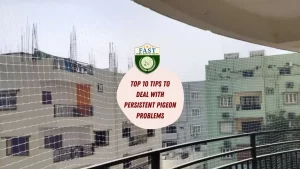Pigeons, while often considered harmless, can quickly become a nuisance when they invade your property. Their droppings can damage buildings, spread diseases, and create unsanitary conditions. Fortunately, there are several proactive measures you can take to prevent pigeon problems before they start. By implementing these strategies, you can safeguard your property, protect your health, and maintain a pest-free environment. In this comprehensive guide, we’ll explore various proactive measures for preventing pigeon problems and keeping these birds at bay.
1. Seal Entry Points:
Pigeons typically gain access to buildings through openings such as gaps in roofs, broken vents, or damaged window screens. Conduct a thorough inspection of your property to identify potential entry points and seal them using materials like wire mesh, caulking, or plywood. Pay special attention to areas where pipes, cables, or conduits enter the building, as these are common entry points for pigeons.
2. Install Bird Spikes:
Bird spikes are an effective deterrent against pigeons and other perching birds. These devices consist of rows of pointed spikes that are attached to surfaces where pigeons roost or land. Bird spikes make it uncomfortable for pigeons to perch, forcing them to seek alternative roosting sites. Install bird spikes on ledges, window sills, and other flat surfaces to prevent pigeons from settling in these areas.
3. Use Bird Netting:
Bird netting is another effective solution for keeping pigeons away from buildings and structures. Netting creates a physical barrier that prevents pigeons from accessing roosting and nesting sites. Install bird netting over openings such as balconies, courtyards, and air vents to exclude pigeons while still allowing airflow and light to penetrate. Ensure the netting is securely anchored and free from gaps or tears that pigeons could exploit.
4. Employ Scare Tactics:
Scare tactics can be effective in deterring pigeons from congregating in certain areas. Devices such as motion-activated sprinklers, sound emitters, or visual deterrents like reflective tape or predator decoys can startle pigeons and discourage them from returning. Rotate or combine different scare tactics periodically to prevent pigeons from becoming habituated to a single deterrent.
5. Maintain Cleanliness:
Pigeons are attracted to areas with a ready food source and suitable nesting sites. By maintaining cleanliness around your property, you can reduce the attractiveness of your surroundings to pigeons. Keep outdoor areas free from food scraps, garbage, and spilled birdseed. Regularly clean up debris, fallen leaves, and nesting materials that pigeons might use for building nests.
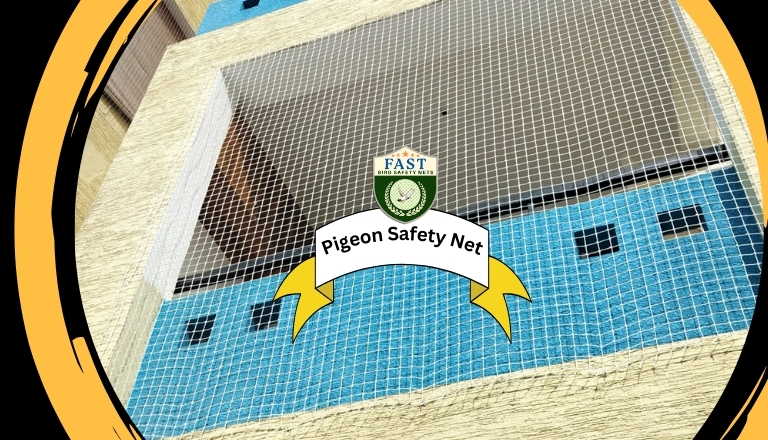
6. Trim Vegetation:
Overgrown vegetation provides pigeons with shelter and hiding spots, making it easier for them to roost and nest near buildings. Trim trees, shrubs, and bushes to eliminate hiding places and reduce the availability of perches for pigeons. Pay particular attention to branches that overhang roofs or windows, as these can provide easy access for pigeons.
7. Implement Exclusion Devices:
Exclusion devices such as door sweeps, bird screens, and chimney caps can prevent pigeons from entering buildings through openings such as doors, windows, and vents. Install these devices to block potential entry points and deny pigeons access to indoor spaces. Regularly inspect and maintain exclusion devices to ensure they remain effective over time.
8. Educate Residents:
Educating residents and building occupants about the importance of pigeon prevention can foster cooperation and compliance with proactive measures. Provide information about the risks associated with pigeon infestations, as well as tips for identifying and addressing potential problem areas. Encourage residents to report any signs of pigeon activity promptly so that preventive measures can be implemented proactively.
9. Seek Professional Assistance:
If pigeon problems persist despite your best efforts, consider seeking professional assistance from pest control professionals or wildlife management experts. These professionals can conduct a thorough assessment of your property, develop a customized pigeon management plan, and implement targeted control measures to address the root causes of the problem effectively.
Conclusion:
Preventing pigeon problems before they start requires a proactive approach and a combination of preventive measures. By sealing entry points, installing deterrents, maintaining cleanliness, and educating residents, you can create an inhospitable environment for pigeons and discourage them from taking up residence on your property. By taking these proactive measures, you can protect your property, safeguard your health, and enjoy a pest-free environment free from the nuisance of pigeons.

